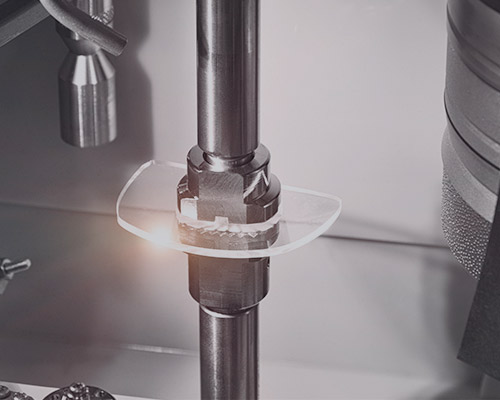

Lenses are the most important part of any pair of eyeglasses. While it might be the frame that you notice first, it’s what you don’t see that matters most when considering ophthalmic lenses. For instance, you don’t want to see reflections, distortions, or excessive edge thickness. Choosing the appropriate lens options will not only improve your vision but it will also enhance the appearance of your eyewear, especially in higher prescriptions.
Digital Lenses
In the digital age of high-definition televisions and phones, lens technology has finally caught up. Advances in eyeglass lens manufacturing have made possible new high-definition eyeglass lenses that correct these aberrations, potentially giving you sharper vision than what is possible with conventional eyewear. These lenses are designed to provide sharper vision in all lighting conditions and reduce glare for nighttime driving and other low light tasks. These lenses may help reduce aberrations that limit field of view and cause starbursts, halos and comet-shaped distortions of lights at night. The end result is that high-definition lenses may provide sharper image quality, better low-contrast and low-lighting vision, reduced glare sensitivity, and better peripheral vision. With digital high-definition lenses, the fabrication of the lenses from wearer’s eyeglass prescription is optimized with computer-controlled surfacing equipment that is much more precise than conventional tools.
Hi-Index Lenses
Hi-index is a special type of plastic lens that is thinner and lighter than conventional plastic lenses. Hi-index material bends light more efficiently than regular plastic, allowing for a decrease in the amount of lens material needed to achieve the same prescription strength. The effect can be quite dramatic, with a 30-40% thickness reduction in high prescriptions, and excellent low distortion vision. Try hi-index for the thinnest lenses available and the best look cosmetically.
Polycarbonate Lenses
Polycarbonate lenses are thinner, lighter and up to 10 times more impact-resistant than regular plastic lenses. They have built-in UV protection. Optical quality, while good, is not quite the equal of hi-index, or standard plastic. These lenses are great for safety glasses, children’s eyewear, and for anyone who wants lightweight, durable lenses. They are a popular choice for safety glasses and sports glasses.
Photo-chromatic Transitions
Transitions (PPG Industries) are photochromic lenses. Photochromic lenses darken when exposed to ultraviolet (UV) light and lighten once UV light is no longer present. Transitions are made from lightweight plastic and utilize a special molecular technology on the lens surface to achieve rapid darkening outside while becoming nearly clear inside and at night. They constantly adjust to the natural light of the day. Transitions lenses protect your eyes from UV light, and reduce glare and eyestrain, while improving contrast. They do not darken as much in a car because the windshield blocks UV light. Consider Transitions lenses when a separate pair of sunglasses is not feasible, or if you simply like the flexibility and optical advantages of a photochromic lens.
Anti-Reflective Coating
Anti-reflective (AR) coating is a multilayer coating applied to the front and back lens surfaces, which reduces glare and reflections. It improves both the vision through your glasses and the appearance of your glasses easing eye fatigue.. AR coating is particularly useful for night driving, eliminating halos around lights and annoying glare. Cosmetically, AR coating makes the lenses in your glasses appear invisible, allowing others to see your eyes clearly. We believe AR coating is one of the most valuable options you can add to your eyewear and we recommend it to virtually all eyeglass wearers.
Polarized Lenses
Polarized lenses contain a special filter that blocks light reflected from flat or smooth surfaces such as water, snow, or a road surface. These reflections cause intense, annoying glare. Polarized sunglasses improve visual comfort, especially for activities such as fishing, boating, golfing, biking, or jogging. They are a great choice for anyone who spends a lot of time outdoors.
Progressive Lenses
Referred to as “no-line” bifocals or trifocals, progressive glasses are ideal for patients who have presbyopia —a vision condition marked by a decrease in the ability to focus sharply on nearby objects.
These lenses have many advantages over bifocals and trifocals because they allow the wearer to focus at many different distances, not just two or three. Because they have no lines, progressive lenses allow a smooth, comfortable transition from one distance to another.
Unlike traditional bifocals or trifocals, there are no visible lines separating the different fields of a progressive lens. Your eyes are seen clearly behind the progressive eyeglasses, you’ve got the same “look” as eyeglass wearers often half your age, and there are no “lens lines” to distract your vision.
© 2025 Siegmund Eye Care • Web Design by Three Ring Focus • Privacy / Terms / Employment